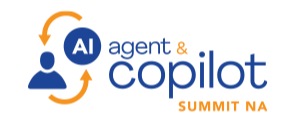For Nadia, Sage Copilot is an essential ally when it comes to tackling a chore most small businesses waste time on – chasing overdue invoices.
Nadia is the volunteer treasurer of a rowing club in Hammersmith, and uses Sage Copilot to automatically detect when invoices are due – and at the click of a button can send automatic payment reminders to chase unpaid invoices.
Every week, Sage Copilot saves her five hours, she estimates – and Sage customers report that using the function gets them paid a week earlier.
Lisa Ewans, Senior Vice President at the Newcastle-based accounting software firm says: ‘Through our AI, Nadia saves hours of admin a week, which is hugely valuable as a volunteer, because it’s not a day job she’s getting paid for so time is her currency.’
‘Sage Copilot automatically runs in the background, and at the click of a button Sage Copilot chases those customers whose payments are overdue and helps to get the payments in.’
Small businesses can customise the tone of their invoice-chasing emails so it sounds like them, giving them control of how the AI works for them.
Sage Copilot helps small business owners stay on top of their finances and in control of cash flow: as well as chasing invoices. It can help business owners spot duplicate payments and other errors in their accounts, a common problem, and spot trends that might affect the business.
From tradespeople to coffee shop owners
Sage Copilot helps small business owners stay on top of their finances and in control of cash flow
Sage Copilot has a huge amount to offer for businesses in many sectors: tradespeople, for example, often spend considerable time chasing late payments.
Tradespeople can use the time saved to focus on finding new customers or delivering for existing ones.
With Sage Copilot, small business owners can stay on top of their finances with confidence. From chasing invoices to catching duplicate payments and errors, it even spots trends that might affect their business—helping them stay one step ahead.
And when it identifies changes, like rising prices, Sage Copilot provides clear, timely alerts so you can act quickly and make confident decisions.
For other business owners such as cafe owners, the ability to easily spot duplicate payments within VAT returns, or payments that have been miscategorised allows business owners to file returns with peace of mind.
Lisa Ewans says: ‘The focus is around identifying errors in the data, so Sage Copilot spots duplicate transactions for example and alerts business owners automatically. It gives business owners the confidence to sign off returns quickly, and saves them time.’
Sage is a British business, born and bred, with its global headquarters in Newcastle—our home for over 40 years. In that time, it has worked closely with businesses across every sector to understand their challenges and develop financial AI that delivers real value to businesses, solving real world challenges.
Helping with the details
For accountants and bookkeepers, Sage Copilot offers other benefits, helping them deal with both tax returns and ‘Know Your Customer’ (‘KYC’) checks, which are a series of procedures businesses must follow to verify their customers’ identities and check their risk profiles.
Sage’s experts identified the real ‘pain points’ faced by accountants and bookkeepers, who often spend too much time chasing clients for documents such as identity documents and paper copies of receipts.
Instead of chasing clients via phone and email, Sage delivers automatic assistance when it comes to the documents accountants and bookkeepers need for tax returns and KYC processes.
Ewans says: ‘One of the biggest pain points we hear from accountants is that they spend a load of time chasing up documents,transactions that haven’t been submitted properly, and chasing up paper copies of receipts.’
Sage created a workflow specifically designed so that accountants and bookkeepers could spend less time chasing customers for information.
Instead, Sage Copilot automatically reaches out to customers to request information, and customers upload receipts (for example) as images.
This means that accountants have to spend less time chasing customers via email.
Trusting AI
For Sage, it was important that businesses should be able to trust the AI software to deliver securely, privately and effectively. Sage’s AI Trust Label is a direct response to this – it is designed to provide customers with clear, accessible information about the way AI functions across Sage products.
Sage Copilot was made in the UK, and was built from the ground up with the needs of this country’s businesses in mind.
Ewans says: ‘We know that trust is really important to our customers. You don’t have to be a huge Silicon Valley company to deliver for customers.
‘We have 40 years of experience working with small businesses, and 400 UK-based engineers and data scientists building Sage Copilot to deliver an AI copilot that focuses on the real needs of small businesses today.’
























